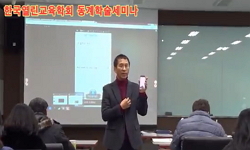In Jung-pyeong, there used to be four mutual aid societies called ‘Gye’ in Korean: Dong-gye, Song-gye, Janghak-gye, and Heunghak-gye. Dong-gye and Song-gye were organized in mid 1800's, and retained until early 1980's. We don't know exactly the pu...
http://chineseinput.net/에서 pinyin(병음)방식으로 중국어를 변환할 수 있습니다.
변환된 중국어를 복사하여 사용하시면 됩니다.
- 中文 을 입력하시려면 zhongwen을 입력하시고 space를누르시면됩니다.
- 北京 을 입력하시려면 beijing을 입력하시고 space를 누르시면 됩니다.
https://www.riss.kr/link?id=A82342361
-
저자
이주형 (전주대학교)
- 발행기관
- 학술지명
- 권호사항
-
발행연도
2010
-
작성언어
Korean
-
주제어
중평마을 ; 동계 ; 송계 ; 장학계 ; 흥학계 ; Jung-pyeong Village ; Dong-gye ; Song-gye ; Janghak-gye ; Heunghak-gye
-
등재정보
KCI등재
-
자료형태
학술저널
-
수록면
115-131(17쪽)
- 제공처
-
0
상세조회 -
0
다운로드
부가정보
다국어 초록 (Multilingual Abstract)
In Jung-pyeong, there used to be four mutual aid societies called ‘Gye’ in Korean: Dong-gye, Song-gye, Janghak-gye, and Heunghak-gye. Dong-gye and Song-gye were organized in mid 1800's, and retained until early 1980's. We don't know exactly the purpose, rules, and systems of Dong-gye, however, it is believed that the Wollang Lees who inhabited in Jung-pyeong did a major part to plan and set up it. People who lived in Jung-pyeong and Jeom-chon organized Song-gye to gather wood for fuel and compost materials. Since Song-gye was surrounded with Mt. Ryugok, people in this area could gather sticks for fire and compost materials that needed to maintain their daily living. Janghak-gye and Heunghak-gye were organized for financial support in educating children during Japanese colonial rule of Korea. When they were organized, there was only one educational institution called ‘Seodang‘-a private school which is for study of Chinese classics. Later, another institution, Ma-ryeong public school, was founded in 1922. Thereafter, children in Jung-pyeong could learn not only at seodang but also at public school. However, Japanese gradually oppressed educating children at seodang, and then much more children couldn't help attending public school instead. The organization of gye in Jung-pyeong consisted of three parts: a ‘Gyejang’, ‘Yusa’, and ‘Gyehoi’. A gyejang was a symbolic duty and was entrusted to the Lees. A yusa carrying out practical affairs of gye was appointed to the oldest member of gye annually, but it was often reappointed the one person. A gyehoi was the meeting held periodically once in a year, which usually took place between October and December of the lunar calendar during off farming season. The financial resources for gye mostly was appropriated by the money which was raised by its members, and the rest of it was supplied by the interests yielded from that money, which targeted the members. The fund from the interests was an important way in order to increase the finances for gye. Additionally, the fund was also made up by a farm rent or by renting the appliances which belonged to gye. The money raised through these various processes was used to repurchase and repair the items they shred, paid taxes, or support seodang. It was generally used to deal with communities' common affairs. On the surface the objective of each gye appears to be different, however, its purpose had been focused on solving common businesses related with everyday life. Other gye were organized in many parts other than Jung-pyeong. Dong-gye and Song-gye were especially organized a lot at the end of Joseon, and Janghak-gye and Heunghak-gye were formed during Japanese colonial rule in particular with respect to establishing schools. Most of Dong-gye and Song-gye were declined or discontinued by the Japanese colonial policy, reforming administrative district of Korea. However, Dong-gye and Song-gye in Jung-pyeong is the case continued during Japanese colonial rule. Janghak-gye and Heunghak-gye in other parts grew smaller or were abolished, supporting funds for founding schools. Unlike them, Janghak-gye in Jung-pyeong just supported children so that they could continue learning.
목차 (Table of Contents)
- I. 머리말
- II. 중평마을 동계(洞契)와 송계(松契) 조직과 운영
- III. 중평마을 장학계(裝學契)와 흥학계(興學契) 조직과 운영
- IV. 맺음말
- 참고문헌
- I. 머리말
- II. 중평마을 동계(洞契)와 송계(松契) 조직과 운영
- III. 중평마을 장학계(裝學契)와 흥학계(興學契) 조직과 운영
- IV. 맺음말
- 참고문헌
- Abstract
동일학술지(권/호) 다른 논문
-
14세기 말-15세기 초 프랑스 왕국의 ‘재정 혁명’과 재정 문제
- 전북사학회
- 성백용
- 2010
- KCI등재
-
- 전북사학회
- 임지환
- 2010
- KCI등재
-
- 전북사학회
- 김강일
- 2010
- KCI등재
-
- 전북사학회
- 김병남
- 2010
- KCI등재





 eArticle
eArticle




